
WPC Wall Panels: How They Withstand Moisture in Bathrooms & Kitchens

Let's start with a scenario we've all either lived through or heard about: You've just moved into a new home, and the bathroom looks perfect—fresh paint, sleek fixtures, and a shower that feels like a luxury. Six months later, you notice a small dark spot near the shower. A month after that, it's grown into a fuzzy patch of mold. You scrub it, repaint, and cross your fingers… but three months later, it's back. Sound familiar? For anyone who's dealt with moisture damage in bathrooms or kitchens, this cycle of frustration, expense, and health concerns is all too real.
Bathrooms and kitchens are the heart of any home, but they're also moisture magnets. Hot showers, steam from cooking, splashing water—all of these create an environment where traditional wall materials like drywall or paint struggle to survive. Mold, mildew, warping, and rot become constant battles, turning spaces that should feel welcoming into sources of stress. But what if there was a material that could laugh in the face of moisture? Enter WPC wall panels—a solution that's changing how homeowners and designers approach these high-moisture zones. As a wpc wall panel supplier with years of experience, we've seen firsthand how these panels transform bathrooms and kitchens from problem areas into spaces that stay beautiful, functional, and mold-free for years.
What Are WPC Wall Panels, Anyway?
First things first: WPC stands for Wood Plastic Composite. At its core, it's a blend of wood fibers (or wood flour) and plastic polymers, mixed with additives like UV stabilizers, colorants, and foaming agents. The result? A material that takes the best of both worlds— the natural look and feel of wood, and the durability and moisture resistance of plastic—without the drawbacks of either.
Traditional wood panels, for all their beauty, are porous. They soak up water like a sponge, leading to swelling, warping, and eventually rot. Drywall, meanwhile, is made of gypsum—a material that turns soft and crumbly when wet, making it a breeding ground for mold. Even ceramic tiles, though water-resistant, rely on grout lines that crack over time, letting moisture seep behind the surface and cause hidden damage. WPC wall panels, by contrast, are engineered to be non-porous. The plastic component forms a tight, sealed barrier that repels water, while the wood fibers add strength and texture. It's a marriage of science and practicality that solves the age-old problem of moisture in high-humidity spaces.
But not all WPC panels are created equal. That's where a trusted wpc wall panel supplier comes in. Reputable suppliers don't just sell panels—they offer wpc wall panel solutions tailored to the unique needs of bathrooms and kitchens. This means panels designed with extra moisture resistance, reinforced edges to prevent water seepage, and finishes that mimic natural materials like wood, stone, or tile—so you don't have to sacrifice style for durability.
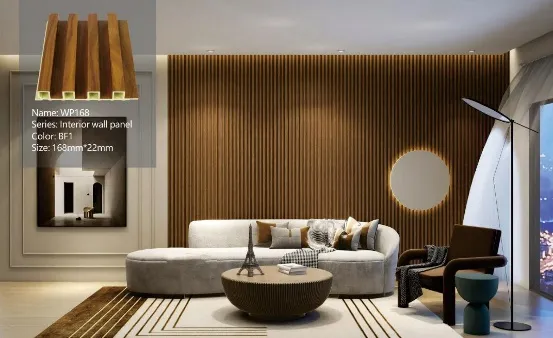
The Science Behind WPC's Moisture Resistance
To truly understand why WPC wall panels outperform traditional materials in damp environments, let's dive into the science. Imagine two sponges: one made of wood and one made of plastic. The wood sponge soaks up water; the plastic sponge repels it. WPC panels work like that plastic sponge, but with the added structure of wood fibers. Here's how it breaks down:
1. The Composite Structure
WPC is typically composed of 40-60% wood fibers (or rice hulls, bamboo, or other plant-based materials), 30-50% thermoplastic polymers (like polyethylene or polypropylene), and 5-10% additives (UV stabilizers, colorants, foaming agents). During manufacturing, these ingredients are melted, mixed, and extruded into panels under high pressure and heat. This process fuses the wood fibers and plastic into a single, dense material with no gaps or pores for water to penetrate. Unlike solid wood, which has natural grain patterns and tiny cracks that absorb moisture, WPC's structure is uniform and sealed—think of it as a solid block of moisture-resistant material.
2. No Organic Food for Mold
Mold and mildew thrive on organic materials like wood, paper, or drywall. They feed on the cellulose in these materials, breaking them down over time. WPC panels, however, have their wood fibers completely encapsulated in plastic. The plastic acts as a shield, preventing mold spores from accessing the organic wood fibers. Even if a WPC panel gets wet, there's nothing for the mold to "eat," so it can't grow. This is a game-changer for bathrooms, where mold isn't just unsightly—it can trigger allergies and respiratory issues.
3. Low Water Absorption Rate
Industry standards for WPC panels often require a water absorption rate of less than 3% after 24 hours of submersion. To put that in perspective: solid wood can absorb 10-30% of its weight in water in the same time, and drywall becomes saturated almost immediately. This low absorption rate means even if your shower splashes water directly onto a WPC wall panel, the panel won't swell, warp, or degrade. The water simply beads up and can be wiped away—no lasting damage, no mold growth, no need for expensive repairs.
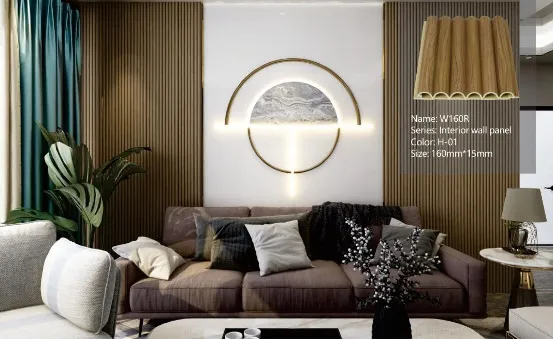
Beyond Moisture: Why WPC Panels Make Sense for Bathrooms & Kitchens
Moisture resistance is the star of the show, but WPC wall panels bring a lot more to the table. Let's break down the other benefits that make them a top choice for busy, water-prone spaces:
Durability That Stands Up to Daily Wear
Bathrooms and kitchens are high-traffic areas. Kids splash water, pots and pans bump against walls, cleaning tools scrape surfaces. WPC panels are tough—really tough. They're scratch-resistant, impact-resistant, and won't chip or crack like ceramic tile. Unlike wood, they don't dent from accidental knocks, and unlike drywall, they won't crumble if you lean a ladder against them during a DIY project. This durability means your walls will look fresh for years, even with the chaos of daily life.
Design Flexibility for Every Style
Gone are the days when "practical" meant "ugly." Today's wpc wall panel solutions come in a stunning range of designs, textures, and colors. Want the warm look of oak? There's a WPC panel for that. Prefer the sleekness of marble or the industrial vibe of concrete? WPC can mimic those too. Some suppliers even offer custom printing, letting you add unique patterns or artwork to your walls. This versatility means you don't have to sacrifice your design vision to get moisture resistance—you can have both.
Easy Installation and Maintenance
Installing traditional tile requires a professional, mortar, grout, and days of drying time. WPC panels, on the other hand, are lightweight and often designed with tongue-and-groove or click-lock systems, making them easy to install for DIYers or contractors. Many panels can be cut with standard tools, and they attach to walls with adhesive or screws—no messy mortar needed. Once installed, maintenance is a breeze: just wipe with a damp cloth and mild soap. No need for special cleaners, sealants, or repainting. For busy homeowners, this translates to less time on upkeep and more time enjoying their space.
Eco-Friendly Credentials
Many WPC wall panel suppliers use recycled wood fibers and plastic in their products, diverting waste from landfills. Unlike solid wood, WPC doesn't require cutting down trees, and unlike PVC (which has environmental concerns during manufacturing), WPC production often uses less toxic additives. For homeowners who want to make sustainable choices without compromising on performance, WPC is a win-win.
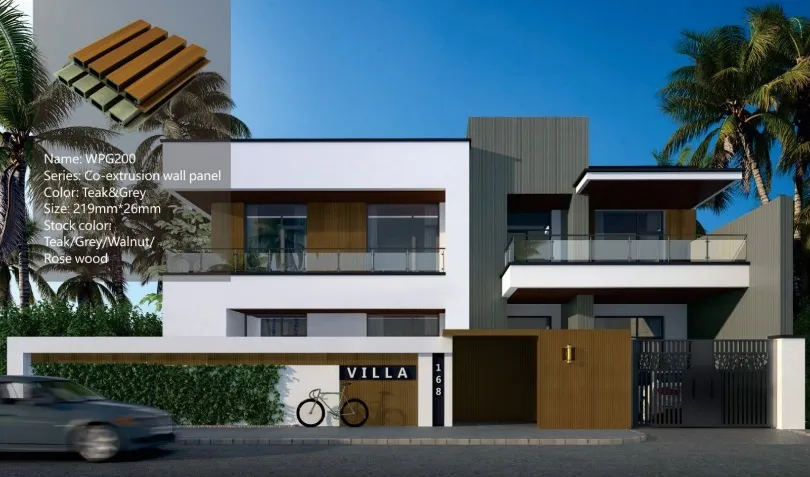
WPC vs. Traditional Wall Materials: A Side-by-Side Comparison
Still not convinced WPC is the right choice? Let's compare it to the most common wall materials used in bathrooms and kitchens. The table below breaks down key factors like moisture resistance, cost, and maintenance:
| Material | Moisture Resistance | Installation Difficulty | Annual Maintenance Cost* | Lifespan | Best For |
|---|---|---|---|---|---|
| Drywall + Paint | Poor (absorbs water; mold-prone) | Moderate (needs sealing, painting) | $100–$300 (repainting, mold treatment) | 3–5 years (in damp areas) | Dry rooms only |
| Ceramic Tile | Good (tile resists water; grout cracks) | High (professional installation, grouting) | $50–$150 (grout sealing, mold cleaning) | 10–15 years (with grout repairs) | Shower surrounds, backsplashes |
| Solid Wood Paneling | Poor (warps, rots, mold-prone) | Moderate (needs sealing, staining) | $200–$400 (resealing, sanding, repairs) | 5–8 years (in damp areas) | Dry, low-humidity kitchens |
| WPC Wall Panels | Excellent (non-porous; mold-resistant) | Low (DIY-friendly click/ adhesive systems) | $10–$50 (occasional cleaning) | 15–25 years | Bathrooms, kitchens, laundry rooms |
*Estimated costs based on a 50 sq ft wall area, excluding major repairs.
The table speaks for itself: WPC wall panels outperform traditional materials in nearly every category that matters for moisture-prone spaces. They're more durable than drywall, easier to install than tile, and require far less maintenance than wood. And while the upfront cost might be slightly higher than drywall, the long-term savings on repairs and replacements make them a smarter investment.
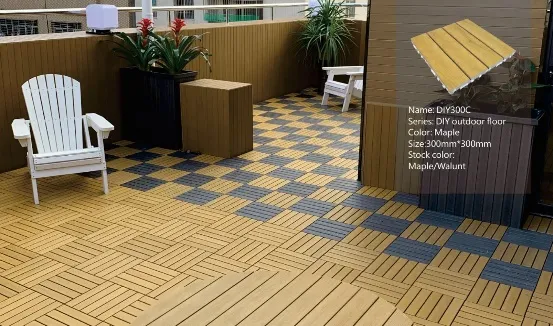
Choosing the Right WPC Wall Panel Supplier
Not all WPC panels are created equal, and the supplier you choose can make a big difference in the quality and performance of your walls. A reliable wpc wall panel supplier doesn't just sell products—they offer wpc wall panel solutions that address your specific needs. Here's what to look for when shopping around:
1. Quality Certifications
Reputable suppliers will have their panels tested by third-party labs for water absorption, fire resistance, and durability. Look for certifications like ASTM D7031 (standard for WPC decking and railing, which applies to panels), or ISO 9001 (quality management). These certifications ensure the panels meet strict industry standards and will perform as advertised.
2. Customization Options
Every bathroom and kitchen is unique. Maybe you need panels that match your kitchen cabinet supplier 's wood finish, or panels cut to fit around a quirky window in your bathroom. A good supplier will offer custom sizes, colors, and textures to fit your space. Some even provide 3D rendering tools to help you visualize the final look before ordering.
3. Technical Support and Warranty
Installing WPC panels is easier than tile, but you might still have questions. A great supplier will offer technical support—whether it's help with measurements, installation tips, or troubleshooting. They should also stand behind their products with a solid warranty (look for 10+ years) that covers defects, warping, or discoloration.
4. Sustainability Practices
If eco-friendliness is important to you, ask suppliers about their materials and manufacturing processes. Do they use recycled plastic and wood fibers? Is their production facility energy-efficient? A supplier that prioritizes sustainability is more likely to produce high-quality, long-lasting panels.
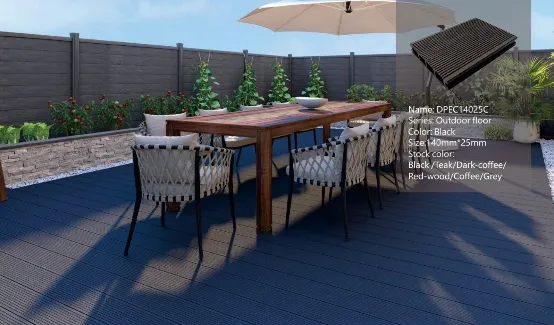
WPC Wall Panel Solutions for Every Space
WPC panels aren't a one-size-fits-all product—they're versatile enough to handle any moisture-prone area in your home. Here are some of the most popular wpc wall panel solutions for bathrooms and kitchens:
Bathroom Applications
- Shower Surrounds: WPC panels are perfect for shower walls—they resist water, mold, and soap scum, and they're easy to clean with a squeegee or cloth.
- Accent Walls: Add texture to your bathroom with a WPC accent wall behind the vanity. Choose a stone or wood-look finish to create a spa-like vibe.
- Wainscoting: Protect lower walls from splashes with WPC wainscoting. Pair it with paint above for a classic look that's still moisture-resistant.
Kitchen Applications
- Backsplashes: Say goodbye to grout lines with WPC backsplashes. They're heat-resistant (up to 176°F/80°C), so they can handle splatters from pots and pans.
- Cabinets and Island Panels: Use WPC panels to wrap kitchen islands or cabinet sides for a cohesive look that's easy to wipe clean.
- Ceiling Panels: Kitchen ceilings are often overlooked, but they collect steam and grease. WPC ceiling panels resist staining and are simple to clean with a damp mop.
And don't forget about flooring! Many homeowners pair WPC walls with moisture-resistant flooring from a trusted flooring supplier . WPC flooring, luxury vinyl planks, or porcelain tiles work seamlessly with WPC walls, creating a unified, water-resistant space from floor to ceiling.
Maintenance Tips to Keep Your WPC Panels Looking Like New
One of the best things about WPC wall panels is how little maintenance they require. But a little care goes a long way in extending their lifespan. Here's how to keep them looking fresh for decades:
1. Regular Cleaning
Wipe down panels with a soft cloth or sponge and mild soap (like dish soap) once a week. For tougher stains (like soap scum in the shower), use a non-abrasive cleaner (avoid bleach or ammonia, which can damage the finish). Rinse with clean water and dry with a towel to prevent water spots.
2. Avoid Harsh Tools
Scouring pads, steel wool, or sharp scrapers can scratch WPC panels. Stick to soft cloths or nylon brushes for cleaning. If you need to remove a stubborn stain, let the cleaner sit for 5–10 minutes before wiping, rather than scrubbing.
3. Check for Leaks
While WPC panels resist moisture, they're not invincible to standing water. If you notice a leak under your sink or around your shower, fix it promptly. Standing water can seep behind panels and damage the wall structure (even if the panels themselves are fine).
4. Protect from Extreme Heat
WPC panels can handle normal kitchen heat, but direct contact with hot pots or hair straighteners can melt or warp them. Use trivets under hot pans, and keep styling tools away from bathroom walls.
Why WPC Wall Panels Are the Future of Moisture-Prone Spaces
As homeowners and designers alike prioritize durability, style, and low maintenance, WPC wall panels are quickly becoming the go-to choice for bathrooms and kitchens. They solve the age-old problem of moisture damage without forcing you to compromise on aesthetics or budget. Whether you're building a new home, remodeling, or just tired of repainting your bathroom walls every year, WPC panels offer a practical, long-lasting solution.
So, if you're ready to say goodbye to mold, warped walls, and endless maintenance, it's time to explore wpc wall panel solutions . Start by researching reputable wpc wall panel suppliers in your area, ask for samples, and imagine a bathroom or kitchen that stays beautiful—no matter how many showers you take or pots you boil. Your future self (and your walls) will thank you.
Tags:
Recommend Products










